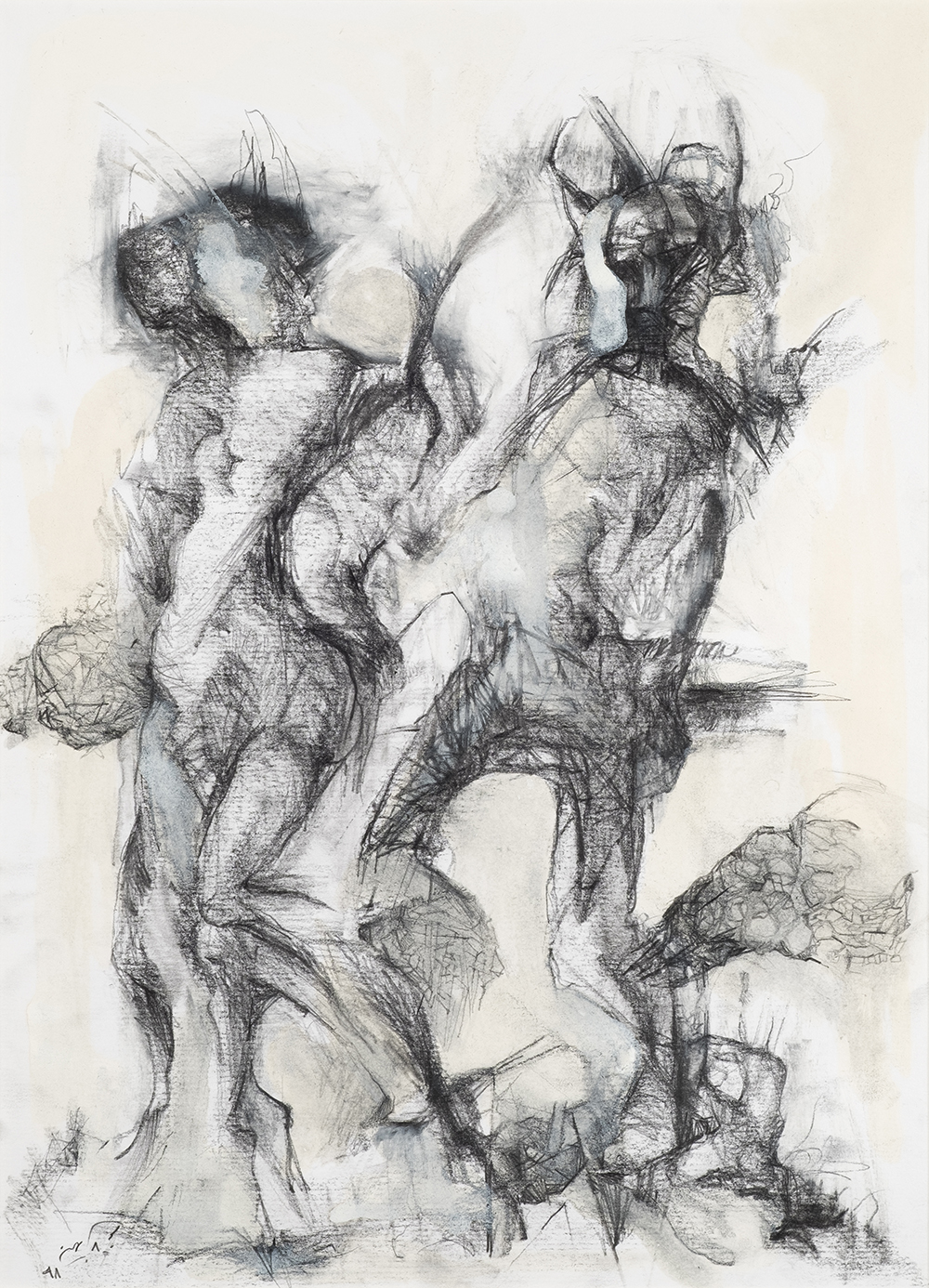



Either an elusive world with uninhibited and abandoned places, or a simple and pure nature that has been encrypted by the power of mind; humans who have transformed into strange and unfamiliar bodies or places that look like human faces and body parts; the visible world has become obscure and the geometry of external places have lost their clarity, and in return, the face of fear, alienation, longing and loneliness has become unconcealed and clear. These are the ideas that can be seen in Boyeh's paintings. On one hand, the bodies of objects and people have become blurred and intertwined, and on the other hand, the inner feelings and emotions of the objects and places are embodied in the artwork. The drawings are immersed in the sense of destruction and disorder of the places where ostensibly people have lived. There is a distance between oneself, the world, the objects and the human being; the distance that makes objects and faces lose their usual shapes and find rough, sad, incomprehensible faces. The internalized image of the outside world in Boyeh's work is probably not unfamiliar to the citizens of our anxious and lonely world. The movement of the lines to create shapes, while at the same time dismantling and erasing them and allowing new patterns and shapes to come to life from them have created an intense quality in the paintings. The dialogue between clarity and ambiguity in Boyeh's successful pieces is evident, and the audience's eyes and mind are constantly on the oscillation between the non-figurative and abstract interpretation of the work and its figurative reading. The controversy of form and formlessness, of finiteness and carelessness, along with the expressive and nervous states of lines, patterns, and colors, is a strong element of these pieces; an element which is a seamless narrative of the struggle between the outside and inside worlds of the human kind. -Doctor Amir Maziyar


























